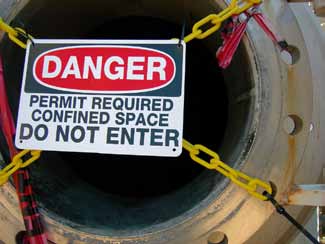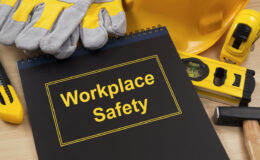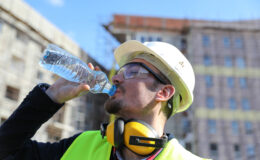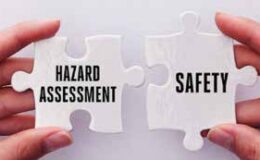By Travis Halsted, Loss Control Consultant
During our daily discussions within MTMIC’s Loss Control team, we are constantly looking for ways to help our policyholders identify ways to be proactive and compliant with MIOSHA’s standards. One area that comes up quite often are confined spaces. Whether it be construction or general industry,
MIOSHA regularly cites infractions for these often overlooked areas. Through the 10 years I have been involved in workplace safety, I have found the confined space topic to be the most difficult topic to complete, discuss, teach and interpret. Is it a confined space? If so, is the area a permit required confined space? If it is a permit required confined space then am I able to eliminate the need for the permit? These are all great questions and they often leave people with their head spinning. In many cases, the person just ends up not completing the necessary items.
Part of the contention with confined spaces is that we often don’t truly know what is considered a confined space. Many of us just think of pits, silos, tanks and other easily identifiable items as confined spaces. What about your powder coat oven? What about the paint booth exhaust system that you have? What about the hoppers that you have for your materials that you use. These are not only, most likely, a confined space, but there is a high likelihood that they are permit required confined spaces.
In the rest of this article I hope to clear up some, but not all, of the confusion regarding confined spaces. To understand what kind of confined space we have, we must first determine if what we have is a confined space.
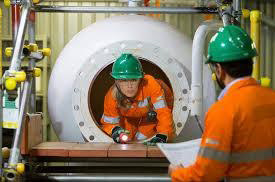
What Is a Confined Space?
Generally speaking, a confined space: Is large enough for an employee to enter fully and perform assigned work; Is not designed for continuous occupancy by the employee; and Has a limited or restricted means of entry or exit.
If you have an area that meets ALL THREE of these items then it is a confined space. If it only meets one or two of these items then it is not a confined space. So, in every MIOSHA class I have gone to, a person will ask, “What is considered limited or restricted means of entry or exit”. This is not a difficult question to answer. In most cases I have found MIOSHA Enforcement Officers to say that if you have to crawl or climb, use a ladder, or swing to your exit then it is limited or restricted means of entry or exit. This could also include the size of the opening into the confined space. On almost every occasion, if there is a normal sized door or stairs (not ladders) then it is not considered limited or restricted means of entry or exit. With that being said, each situation needs to be evaluated as there is no cookie cutter answer.
Is My Confined Space a Permit Required Confined Space?
So you have identified that you do have a confined space. The next question should be is if the confined space is a permit required confined space. This is the one that provides some hair pulling moments for the ones in charge of the confined spaces. By definition, a permitrequired confined space has one or more of these characteristics that can be a danger to life and health:
- Contains or has the potential to contain a hazardous atmosphere;
- Contains a material with the potential to engulf someone who enters the space;
- Has an internal configuration that might cause an entrant to be trapped or asphyxiated by inwardly converging walls or by a floor that slopes downward and tapers to a smaller cross section; and/or
- Contains any other recognized serious safety or health hazards.
If your confined space does not have one or more of the danger to life and health items then you just have a regular confined space. If your confined space has one or more of the items listed as a danger to life and health, then you have a permit required confined space. Now, before the red lights and sirens start going off, let’s take a look at how we can possibly block entry to, or reclassify the confined space to avoid having to have the whole permit process.
Am I Able To Eliminate The Need For The Permit?
For one, do you EVER plan on entering the permit required confined space? By entering, I mean will any part of the body break the plane of the confined space. If so then we must continue down the permit road. If not then we can make it a confined space no entry permitted. To make it no entry permitted, it must never be entered, and you must put items in place to prevent entry. Simple bolts will not suffice. The opening, hatching, grate, etc., must be secured in a way that can’t easily be removed. Welding the item shut is the most often used means, but definitely not the only way. By implementing these means of no entry, you can avoid the permit required aspect. Please remember that this can only be done if no one ever enters the confined space.
So that is one way to eliminate the permit required aspect. Another way is to reclassify it. To reclassify a permit required confined space means to eliminate the hazard that made it a permit required confined space to begin with. For instance, if you have a large water tank that, by definition, is a permit required confined space, but if you empty out the water and lockout the valve that could refill the tank, then the tank is reclassified to just a confined space. A large percentage of permit required confined spaces are eliminated by reclassifying, but it is essential that you identify each and every potential hazard. Air quality, oxygen levels, electrical power, rotating shafts and so many more items can cause an area to be permit required and need to be identified. If you can eliminate the hazard then you can reclassify. If you cannot eliminate the hazard then you must continue down the permit required confined space path. There are several parts to a thorough permitrequired confined space program and I would take the entire newsletter if I covered all of that in this article. If you find yourself still needing a permit required confined space program, then this would be a great time to call your MTM Loss Control Consultant.
Requirement of Assessment
A large amount of you reading this right now are thinking, that you are all set because you don’t have any confined spaces. Unfortunately, the title of this article rings true and confined spaces do affect us all. Even if you have no confined spaces on site, you must have a document that states that you have evaluated your facility for confined spaces and that you found none. This is not a recommended document, this is required as Part 490 of the MIOSHA standards. 1910.146(c)(1) states that an employer shall evaluate the workplace to determine if any spaces are permitrequired confined spaces.
As I am someone that doesn’t like to bring you a problem without also bringing a solution, I do have a quick solution to most of your questions. That solution is something that you may already do on a regular basis as it is simply to call your Loss Control Consultant. We are trained and eager to help you evaluate confined spaces and if they are permit required, identify how to limit entry into the confined space and how to possibly reclassify the space. There are a great deal of technical terms that come with this program, and it is of the utmost importance that you do not get discouraged from completing this required program as MTMIC has a team willing to help and videos, forms and a program template on our client portal that can assist in being compliant. I look forward to hearing some of the unique confined space situations that you may have and how we can reduce the risk to your employees.

